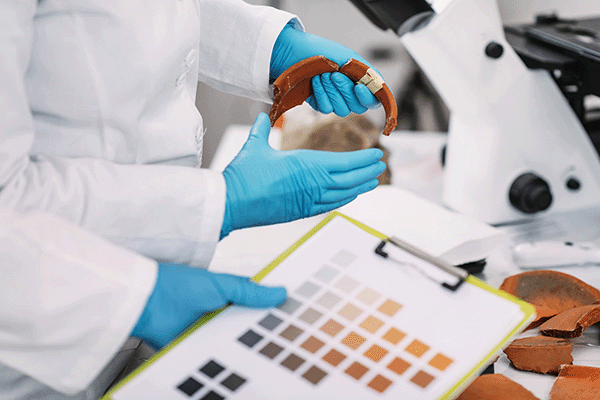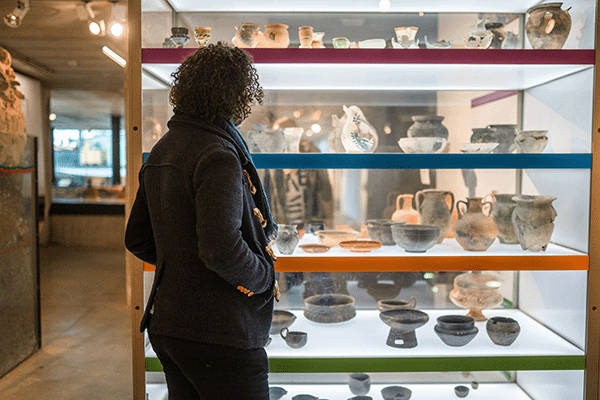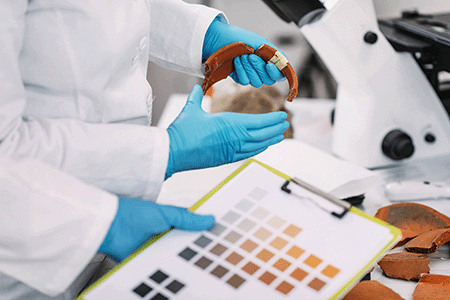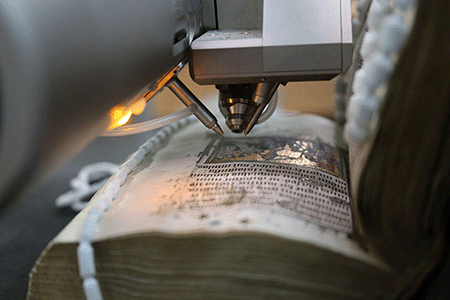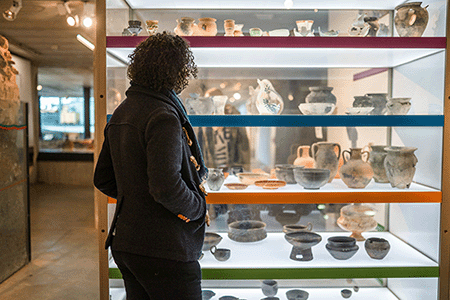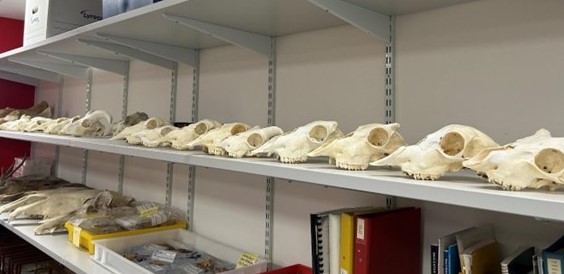The RICHeS team recently visited the University of York to meet with Professor Oliver Craig, an leading expert in Archaeological Science and project lead for the RICHES’ funded facilities project Biomolecular tools for Archaeological, Conservation and Heritage Science (BIOARC-HS) and his team. This new facility will build on the University of York’s existing strengths and expertise, expanding its capacity to meet the increasing demand for biomolecular analysis in heritage science. The visit provided an opportunity to learn more about the cutting-edge work taking place and to see first hand how RICHeS’ investment is enabling large-scale research advancements.
Visiting the BioArCh Centre of Excellence
The University of York is home to BioArCh, a world-renowned centre of excellence in bioarchaeology, that brings together expertise from the Departments of Archaeology, Biology and Chemistry. BioArCh has gained international recognition for its work in analysing human, animal, and plant remains through advanced molecular techniques. Biomolecular analysis plays a crucial role in archaeology, providing insights into past societies through a variety of cutting-edge scientific methods:
- DNA analysis: Used to trace genetic relationships and evolutionary patterns, revealing details about human migration, ancestry and ancient lifestyles
- Protein analysis: Offering valuable information on ancient diets, health and diseases
- ZooMS: Used to obtain taxonomic information of bone fragments
- Stable isotope analysis: To study the diet and mobility of ancient populations
- Lipid analysis: Studies fats, oils and other lipids preserved in archaeological materials to reconstruct dietary habits and cooking practices
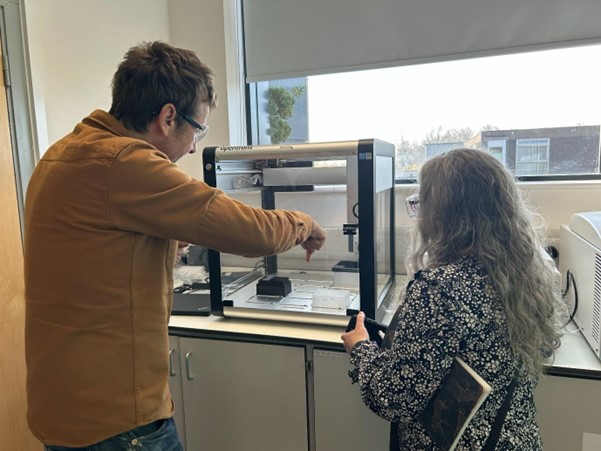
The University of York’s BioArCh centre is at the forefront of developing and applying these techniques, transforming our understanding of the past. During the visit, the RICHeS team toured BioArCh’s laboratories and learned about the groundbreaking research being conducted. Professor Oliver Craig provided a demonstration of some of the cutting-edge techniques in use, showcasing the integration of biomolecular science into archaeological investigations. One particularly fascinating moment was observing a team member recording a piece of pottery before subjecting it to lipid analysis, an essential step in uncovering traces of ancient food residues.

Expanding facilities and automating workflows
With RICHeS’ investment, BioArCh is now scaling up to meet the growing demands of the heritage science community. The establishment of the BioARCH-HS facility represents a major leap forward, offering a comprehensive suite of biomolecular analysis services tailored for conservation and heritage science research. This initiative will not only increase capacity but also introduce advanced automation to streamline processes, enhancing efficiency and scalability for large-scale studies. Key advancements include:
- Rapid sex determination and taxonomic identification: Implementing innovative methods to quickly determine the biological sex of skeletal remains and accurately classify organisms by their taxa (e.g. species and genus names)
- Automation of laboratory workflows: Evaluating and acquiring new systems to enhance sample processing, improving both speed and accuracy
- New clean-working facility: Addressing contamination concerns with a state-of-the-art clean laboratory, replacing a limited existing facility and is strategically positioned near other BioArCh laboratories on the main campus
The vision behind BIOARC-HS is ambitious and aims to dramatically increase the UK’s capacity for biomolecular analyses and to position BioArCh as a leading global hub for heritage science research.
Looking Ahead
The visit to York was a valuable opportunity for the RICHeS team to witness the impressive progress being made. With expanding facilities, cutting-edge automation and a dedicated research team, BioArCh is well-positioned to drive significant advancements in heritage science. As BIOARC-HS develops further, it promises to unlock new possibilities for understanding our shared past.
Professor Oliver Craig shares:
“We are really excited with the RICHeS initiative, which will allow us to quickly translate the latest cutting-edge advances in biomolecular archaeology to services that can benefit the wider heritage community. In turn, we hope the BioArCh labs will benefit from new partnerships will allow us to tailor our expertise to where its needed most”

